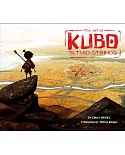Stop-motion animation has long been perceived as a technical practice rather than a creative, demanding art. Though stop-motion requires considerable technical knowledge, it also involves
aesthetics and artistry that go beyond the technician’s realm. Just as important as puppet mechanics are lighting, filters, lenses, camera angle and placement, and dramatic pose and movement.
This manual is a complete guide to the aesthetics of stop-motion animation. Information is organized in an intuitive, easy-to-use structure, following the order an animator uses in setting up
and then executing a scene. The first half concentrates on the aesthetics of lighting and cameras, a primary concern in any shot, with details of camera placement, various lenses and myriad
lighting techniques. The second half deals with the process of performance art, an oft-overlooked aspect of stop-motion animation. Included is a commentary on body language, facial expression,
gesture, movement and emotion—key concepts that are exemplified through the acting process. The work also offers an introduction to narrative form and a glossary of related terms.





















